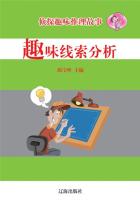Of the Dialectic of Pure Reason in defining the Conception of the "Summum Bonum".
The conception of the summum itself contains an ambiguity which might occasion needless disputes if we did not attend to it.The summum may mean either the supreme (supremum) or the perfect (consummatum).The former is that condition which is itself unconditioned, i.e., is not subordinate to any other (originarium);the second is that whole which is not a part of a greater whole of the same kind (perfectissimum).It has been shown in the Analytic that virtue (as worthiness to be happy) is the supreme condition of all that can appear to us desirable, and consequently of all our pursuit of happiness, and is therefore the supreme good.But it does not follow that it is the whole and perfect good as the object of the desires of rational finite beings; for this requires happiness also, and that not merely in the partial eyes of the person who makes himself an end, but even in the judgement of an impartial reason, which regards persons in general as ends in themselves.For to need happiness, to deserve it, and yet at the same time not to participate in it, cannot be consistent with the perfect volition of a rational being possessed at the same time of all power, if, for the sake of experiment, we conceive such a being.Now inasmuch as virtue and happiness together constitute the possession of the summum bonum in a person, and the distribution of happiness in exact proportion to morality (which is the worth of the person, and his worthiness to be happy) constitutes the summum bonum of a possible world; hence this summum bonum expresses the whole, the perfect good, in which, however, virtue as the condition is always the supreme good, since it has no condition above it; whereas happiness, while it is pleasant to the possessor of it, is not of itself absolutely and in all respects good, but always presupposes morally right behaviour as its condition.
When two elements are necessarily united in one concept, they must be connected as reason and consequence, and this either so that their unity is considered as analytical (logical connection), or as synthetical (real connection) the former following the law of identity, the latter that of causality.The connection of virtue and happiness may therefore be understood in two ways: either the endeavour to be virtuous and the rational pursuit of happiness are not two distinct actions, but absolutely identical, in which case no maxim need be made the principle of the former, other than what serves for the latter; or the connection consists in this, that virtue produces happiness as something distinct from the consciousness of virtue, as a cause produces an effect.
The ancient Greek schools were, properly speaking, only two, and in determining the conception of the summum bonum these followed in fact one and the same method, inasmuch as they did not allow virtue and happiness to be regarded as two distinct elements of the summum bonum, and consequently sought the unity of the principle by the rule of identity; but they differed as to which of the two was to be taken as the fundamental notion.The Epicurean said: "To be conscious that one's maxims lead to happiness is virtue"; the Stoic said: "To be conscious of one's virtue is happiness." With the former, Prudence was equivalent to morality; with the latter, who chose a higher designation for virtue, morality alone was true wisdom.
While we must admire the men who in such early times tried all imaginable ways of extending the domain of philosophy, we must at the same time lament that their acuteness was unfortunately misapplied in trying to trace out identity between two extremely heterogeneous notions, those of happiness and virtue.But it agrees with the dialectical spirit of their times (and subtle minds are even now sometimes misled in the same way) to get rid of irreconcilable differences in principle by seeking to change them into a mere contest about words, and thus apparently working out the identity of the notion under different names, and this usually occurs in cases where the combination of heterogeneous principles lies so deep or so high, or would require so complete a transformation of the doctrines assumed in the rest of the philosophical system, that men are afraid to penetrate deeply into the real difference and prefer treating it as a difference in questions of form.
While both schools sought to trace out the identity of the practical principles of virtue and happiness, they were not agreed as to the way in which they tried to force this identity, but were separated infinitely from one another, the one placing its principle on the side of sense, the other on that of reason; the one in the consciousness of sensible wants, the other in the independence of practical reason on all sensible grounds of determination.According to the Epicurean, the notion of virtue was already involved in the maxim: "To promote one's own happiness"; according to the Stoics, on the other hand, the feeling of happiness was already contained in the consciousness of virtue.Now whatever is contained in another notion is identical with part of the containing notion, but not with the whole, and moreover two wholes may be specifically distinct, although they consist of the same parts; namely if the parts are united into a whole in totally different ways.The Stoic maintained that the virtue was the whole summum bonum, and happiness only the consciousness of possessing it, as making part of the state of the subject.The Epicurean maintained that happiness was the whole summum bonum, and virtue only the form of the maxim for its pursuit; viz., the rational use of the means for attaining it.












